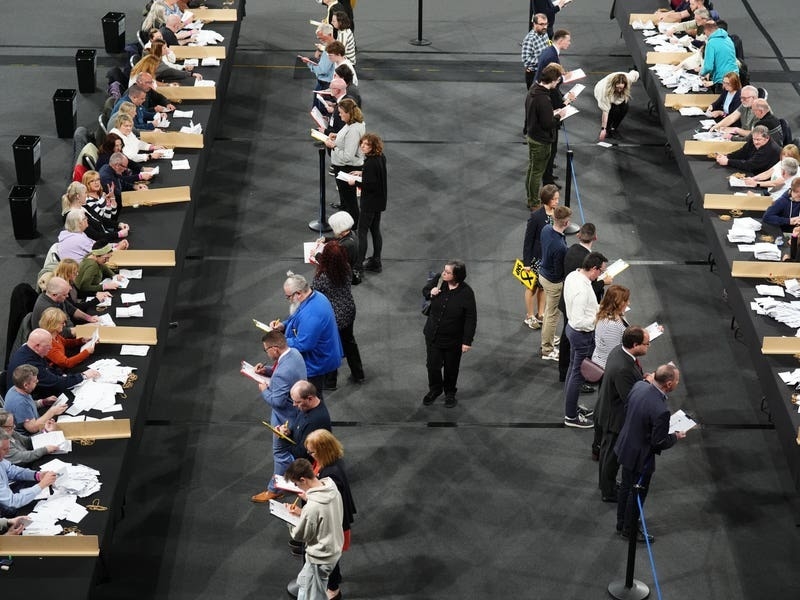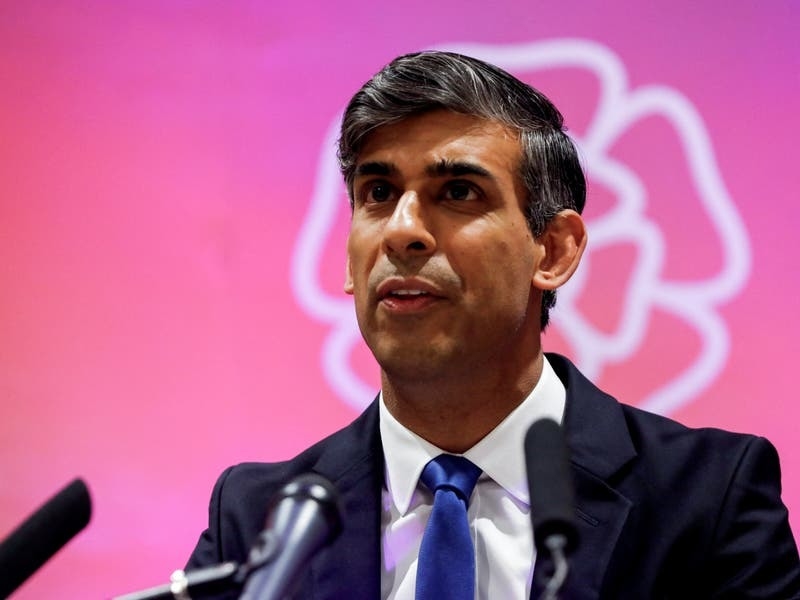The dust has almost settled on the 2024 General Election, with all but one of the 650 results declared.
The final result is not due until Saturday morning, but the election has already broken several records and seen a number of historic milestones.
– Lowest ever number of Conservative MPs
A total of 121 Conservative MPs have been elected: the lowest number in the party’s history.
The previous record low was 156, set in 1906.
The Tories have suffered a net loss of 251 MPs, down from 372 in 2019.
It is their largest ever drop in MPs from one general election to the next.
(The 2019 total is a notional figure, indicating what the party is likely to have won had that election been held using the new constituency boundaries in place this year.)
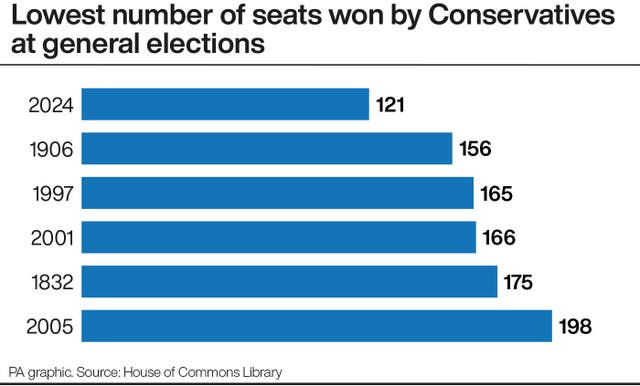
Labour’s total of 412 MPs is the party’s third best ever performance in terms of seats won, just behind the 413 it achieved in 2001 and a few short of the record 419 Labour MPs elected in 1997.
All of these figures include the Speaker.
Labour has made a net gain of 211 seats compared with its notional total at the last election in 2019 of 201.
This is the party’s biggest increase in MPs from one general election to the next since the end of the Second World War.
Labour’s largest ever jump in MPs came in 1945, when it made a net gain of 239 seats.
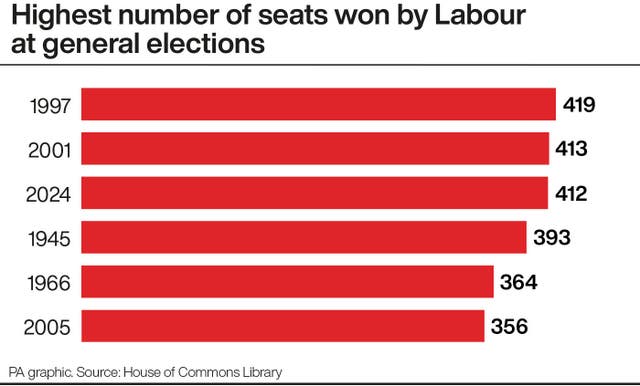
The election has seen the highest number of seats won by a Liberal party for more than 100 years.
With 71 MPs in the new Commons, the Liberal Democrats have won more seats than at any election since the party was established in 1988.
It is also higher than any total achieved by their predecessors, the Liberals, since the general election of 1923, when the party won 158 MPs.
There is a possibility the number will rise even higher when the one outstanding result of this election is declared on Saturday, for Inverness, Skye & West Ross-shire, which looks like being a close contest between the Lib Dems and the SNP.
– Labour wins third largest majority for a single party since 1900
Labour’s majority of 174 is the third largest won by a single party at a general election since the start of the 20th century.
It is just behind the majority of 179 won by Labour in 1997, when Tony Blair became prime minister.
The largest ever majority for a single party at a general election since 1900 is 210, achieved by the Conservatives in 1924 under Stanley Baldwin.
– Labour records lowest ever vote share for majority-winning party
At the same time as coming close to a record majority of seats, Labour has also ended up with the lowest ever share of the vote for a party that has won a majority at a general election.
Labour took just 33.8% of the votes cast.
This is lower than the previous record of 35.2%, set by Labour when it won a majority at the 2005 election.
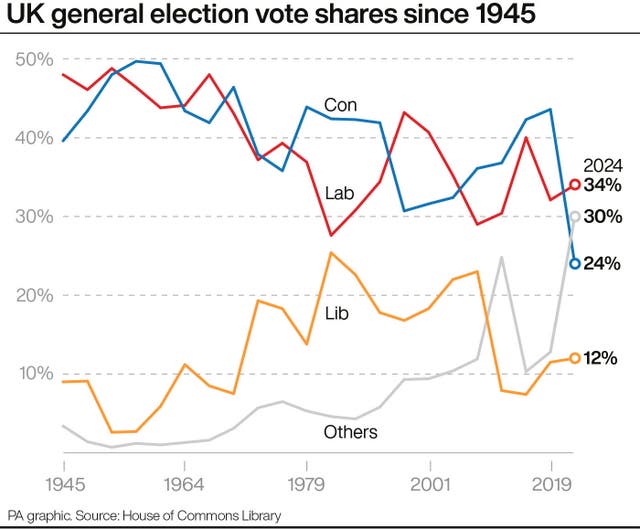
The Tories’ share of the vote, 23.7%, is the lowest for the party at any general election in its history.
The previous low was 30.7% in 1997.

Turnout is on track to be the lowest for more than 20 years.
With 649 of 650 results declared, the turnout figure stands at 59.8%.
This is down sharply from 67.3% at the last election in 2019.
It is also the lowest turnout at a general election since 2001, when it hit 59.4%: the lowest since before the Second World War.
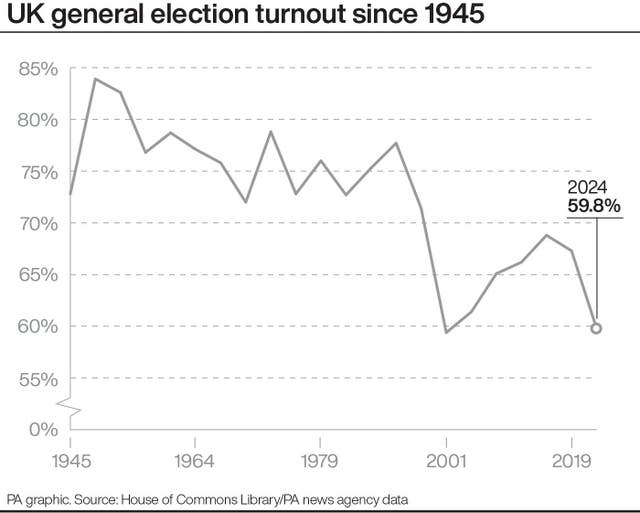
There will be more female MPs in the House of Commons than ever before.
A total of 263 women have been elected: up 43 from the previous record of 220 in 2019.
It means 40% of MPs in the new House of Commons will be female.
This is the sixth election in a row where the number of women MPs has increased.

Bellwether seats are constituencies where the local result has a habit of matching the national outcome.
They are seats that have a pattern of changing hands only when the government itself changes hands.
Since 1964, whichever party wins Dartford has also gone on to form the government – a pattern that held true at this election, with the seat being gained by Labour from the Conservatives on a swing of 17.2 percentage points.
Four seats have been bellwethers at every general election since February 1974: Loughborough, Northampton North, Portsmouth North and Watford – and they have kept their status at this election, with all being won by Labour from the Tories.

